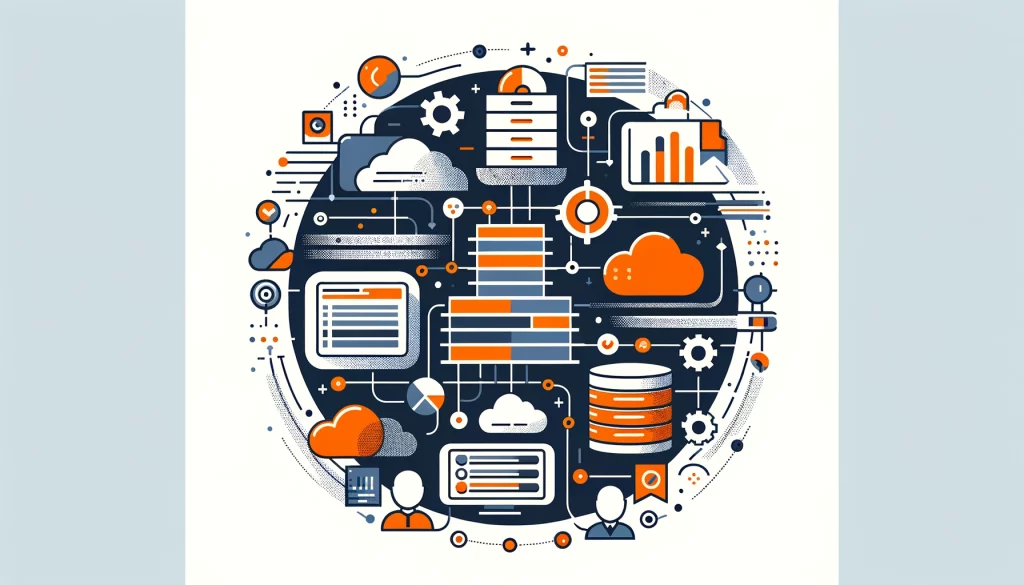
Essential Data Management Practices: MDM, Security, and Best Strategies

Introduction
In today’s digital age, data has become a critical asset for organizations across all industries. Effective data management is essential to ensure that data is accurate, consistent, and readily available when needed. Without proper data management, organizations risk making poor decisions based on incomplete or inaccurate information, leading to lost opportunities and potential financial losses.
This article will explain the basics of managing data, including MDM, metadata, and data lifecycle management. Also discussed will be best practices and strategies for success.
What is Data Management?
Data management involves collecting, storing, organizing, maintaining, and using data efficiently in an organization. It involves ensuring data quality, accessibility, security, and governance throughout its lifecycle.
A store can use management to gather customer information from online orders, in-store sales, and loyalty programs. This helps them understand their customers better and make decisions based on data.
Master Data Management (MDM)
MDM is important for keeping one main source of data accurate and consistent throughout an organization. Master data includes important information for business operations, like customer details, product information, and supplier records. MDM ensures that this data is consistent, accurate, and up-to-date across all systems and departments.
When Do You Need MDM?
Organizations typically need MDM when they have multiple systems and databases containing overlapping or inconsistent data. This may result in problems like repeated entries, inaccurate data, and challenges in acquiring a comprehensive perspective of crucial entities such as clients or goods. MDM helps resolve these challenges by:
- Consolidating data from various sources
- Identifying and resolving data inconsistencies
- Establishing data governance policies
- Providing a centralized view of master data
Metadata Management
Metadata is data that describes other data, providing context and meaning. It involves capturing, storing, and managing this descriptive information to enable better data discovery, understanding, and governance. Examples of metadata include data lineage, data dictionary, and data quality metrics.
Data Lifecycle Management
Data Lifecycle Management (DLM) is the process of managing data from its creation to its eventual archival or deletion. DLM ensures that it properly handles data throughout its lifecycle, from initial capture and storage to its final disposition. The main goals of DLM are:
- Security: Protecting data from unauthorized access, modification, or deletion.
- Availability: Ensuring that data is accessible when needed by authorized users.
- Long-Term Structural Integrity: Maintaining the integrity and usability of data over time, even as systems and technologies evolve.
Best Practices and Strategies for Data Lifecycle Management
- Develop a data governance framework that defines policies, procedures, and responsibilities for managing data throughout its lifecycle.
- Use encryption, access controls, and monitoring to keep sensitive data safe from unauthorized access.
- Regularly backup data and test restoration processes to ensure data availability in case of system failures or disasters.
- Establish guidelines for data storage. Ensure you keep data only for as long as necessary. Ensure data follows all laws and regulations.
- Use automation tools to streamline data management processes and reduce manual errors.
Security Aspects of Data Management
Data security is a critical aspect of dmanagement, as organizations are responsible for protecting sensitive information from unauthorized access, modification, or disclosure. Some key security considerations in management include:
- Access Control: Setting up strict access rules for users to make sure only authorized people can access important data.
- Encryption: Encrypting data both at rest and in transit to protect it from unauthorized access or interception.
- Monitoring and Auditing: Regularly monitoring data access and usage to detect and respond to potential security incidents or breaches.
- Compliance: Making sure management follows industry rules like GDPR, HIPAA, or PCI-DSS.
Example of Data Management in Action
A healthcare organization needs to manage patient data in various systems. These systems include electronic health records (EHRs), billing systems, and research databases. To ensure effective management, the organization can:
- Use MDM solution for one source of patient data, ensuring consistency and accuracy in all systems.
- Make guidelines for documenting key patient information, including its source, date of creation, and level of accuracy.
- Establish data governance policies and procedures for managing patient data throughout its lifecycle, from initial capture to eventual archival or deletion.
- Use security measures like access controls, encryption, and monitoring to keep patient info safe from unauthorized access or breaches.
- Use tools to integrate data and automate patient data flow between systems, reducing errors and improving data access.
The healthcare organization can ensure patient data is accurate, reliable, secure, and easily accessible by following these management practices. This will help in making clinical decisions, conducting research, and completing other important business tasks.
Conclusion
Effective data management is essential for organizations to make informed decisions, improve operational efficiency, and comply with regulatory requirements. Organizations can maintain the accuracy, consistency, and security of their data assets by learning about management basics. This includes MDM and data lifecycle management. By creating and following best practices in these areas, organizations can ensure the quality of their data.
Organizations should consider partnering with experienced providers like DataSunrise for implementing data management solutions. DataSunrise offers exceptional and flexible tools for management, including security, audit rules, masking, and compliance. Our experts can provide valuable guidance and support throughout the management journey. Contact us for a demo to learn about DataSunrise data management solutions and how we can help your organization.
